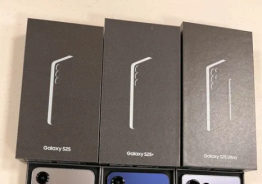Apple is known for its Midas touch and iconic devices. With the most valuable company in the world expected to debut its next-gen smartphone on Sept. 12, iFans and tech gurus will be waiting to see if the purported iPhone 5 can outshine its predecessor iPhone 4S.
The first iteration of the iPhone made its debut in 2007 and each follow-up model surpassed its predecessor's sales success. According to analyst Richard Doherty of the Envisioneering Group, since its launch Apple has sold more than 243 million iPhones, making it one of the best-selling smartphones.
With the holiday season knocking at the doorstep, Piper Jaffray analyst Gene Munster predicts that "Apple could sell 6-10 million iPhone 5s in the final week of September barring supply issues." Munster also estimates that by 2013 end the iPhone 5 sales will overtake 200 million units.
The cascade of rumors and leaks have scrutinized the alleged specs and features of the next-gen Apple smartphone. Here's a look at how the iPhone 4S and the fabled iPhone 5 stack up against each other.
Display, Size, and Weight
The iPhone 4S, like all previous iterations, sports a 3.5-inch Retina display with 960 x 640 pixels resolution. The iPhone 5 will allegedly feature a bigger screen with higher resolution, probably a 4-inch Retina display with 1136 x 640 pixels, which will boost the aspect ratio from the previous versions' 3:2 to 16:9.
Additionally, rumors indicate that the iPhone 5 will have in-cell panel technology, which will likely make it the thinnest and lightest iPhone yet.
"The advantage of in-cell is that you're streamlining the manufacturing process, so in time you should be able to drive efficiencies and reduce costs," IHS analyst Rhoda Alexander told Wired. "Additionally, by reducing the number of layers, you reduce the size and thickness of the device, making it thinner and lighter."
Apple's iPhone 4S is 9.3mm thick; however, analysts believe that Apple will break the 8mm mark with iPhone 5. The current iPhone 4S measures 115.2mm x 58.6mm x 9.3 mm. On the other hand the iPhone 5 is expected to sport 123.83mm x 58.57mm x 7.6 mm dimenstions. At 140gm, the iPhone 4S will be marginally heavier than the supposed 137gm iPhone 5.
Processor and Operating System
The iPhone 5 is expected to pack in a faster processor. However, whether it will be a dual-core or quad-core processor remains unclear. Leaks suggest that Apple will go with an A6 processor, which is an improvement on the iPhone 4S's 800MHz dual-core A5 processor.
The iPhone 5 is also expected to run on Apple's latest iOS 6 platform, as opposed to the iPhone 4S's iOS 5. The new Apple OS is expected to launch in fall and will bring innovative software features to iGadgets, which includes a new 3D mapping service.
"iOS 6 gives you more features to make the things you do every day even better. It's coming this fall, and it's free and easy to upgrade wirelessly on your iPhone, iPad, or iPod touch - the moment it's available," states the Apple Web site.
Storage and Memory
The iPhone 5 is expected to be available in the 16/32/64GB variants like the iPhone 4S. However, unlike the iPhone 4S, which packs in 512MB of RAM, the new iteration is expected to have 1GB of RAM.
Connectivity
Whether the iPhone 5 will have NFC support is a hotly-debated topic. Rumors have indicated that the iPhone 5 may or may not be NFC enabled. Prototypes of the alleged iPhone 5 have sported an NFC chip, fueling speculation that the next-gen smartphone would have NFC support. On the other hand, recently, AnandTech released an analysis which suggests that Apple's iPhone 5 will not have NFC support
Additionally, the iPhone 5 is expected to support 4G LTE. Leaked images from Apple.Pro asserted that Apple would pack in a front-facing NFC chip and a DigiTimes report claimed that the next-gen iPhone was "very likely" to contain an embedded 4G LTE radio. Moreover, Thomas Seitz, a Jefferies & Co. analyst claimed that iPhone 5 would be LTE enabled.
Camera
The iPhone 4S features an 8-megapixel rear-facing camera with f2.4 and a VGA front-facing camera. The iPhone 5 will likely sport an 8-megapixel rear-facing camera like its predecessor but with a f2.2 lens. Additionally, the iPhone 5 is rumored to pack in a 1.3-megapixel front-facing snapper. Rumors are also rife that the iPhone 5's camera may be a 3D one with an AirShare feature.
Battery
All Apple smartphones have a non-removable battery, and that is not expected to change with the iPhone 5. Rumors indicate that the iPhone 5's 1440mAh battery will be bigger than the iPhone 4S's 1430mAh. The battery also has higher voltage and watt-hours capacity. The watt-hours rating has increased marginally to 5.45, as opposed to the 5.3 watt-hours of the iPhone 4S. The iPhone 5 voltage allegedly increases to 3.8 from its predecessor's 3.7.
Other Rumored Changes
The iPhone 5 is also rumored to have a smaller dock connector and a new earphone design. Leaks and rumors also suggest that the iPhone 5 may feature a Nano-SIM rather than the iPhone 4S's microSIM and that the headphone jack has been relocated to the bottom. The iPhone 5 may also sport a unibody design and the backplate of the smartphone may use aluminum rather than glass.
© Copyright 2025 Mobile & Apps, All rights reserved. Do not reproduce without permission.












